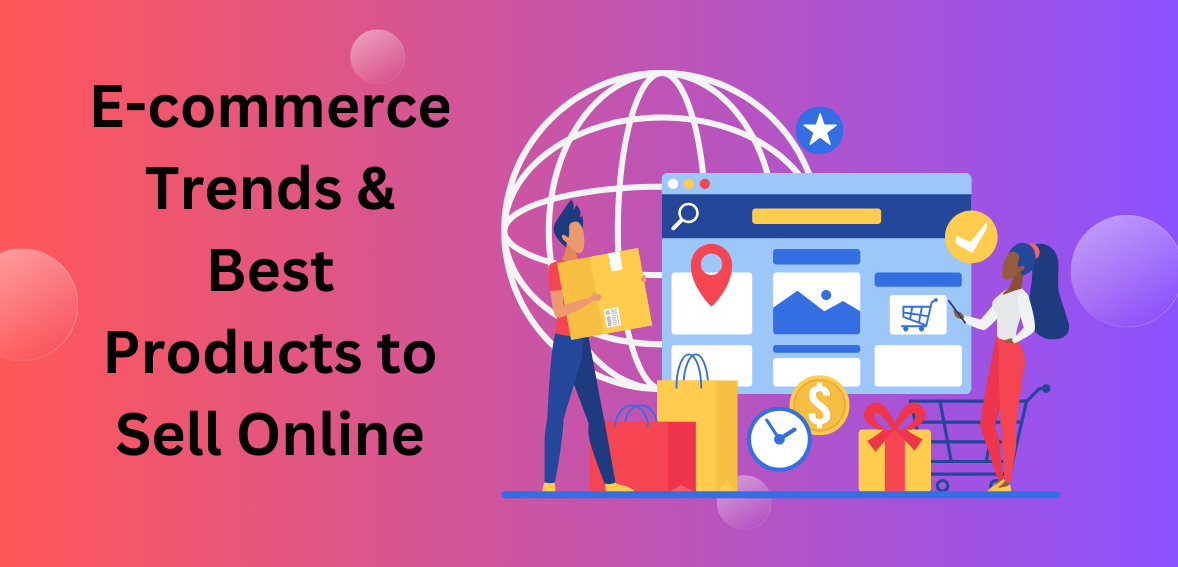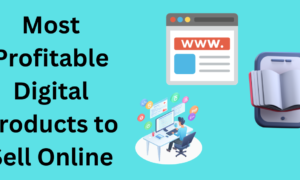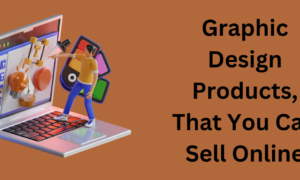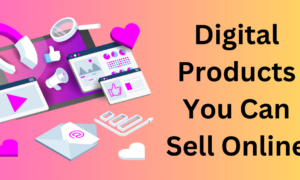Welcome to the exciting world of e-commerce! In today’s digital age, online shopping has become a way of life for millions around the globe. With just a few clicks, you can browse through an endless selection of products and have them delivered right to your doorstep. It’s no wonder that the e-commerce industry is experiencing unprecedented growth year after year.
But what exactly is e-commerce? Simply put, it refers to buying and selling goods or services over the Internet. From small businesses to retail giants, everyone is jumping on the e-commerce bandwagon in order to tap into this booming market.
In this blog post, we will explore the current trends in the e-commerce industry and discuss some of the best products you can sell online in 2024. Whether you’re already running an online store or considering starting one, this article will provide valuable insights and tips to help you succeed in this competitive landscape.
So buckle up and get ready for a deep dive into all things e-commerce – from sourcing products to effective marketing strategies. Let’s uncover how you can leverage these trends and find success in the ever-evolving world of online business.
Current Trends in the E-commerce Industry
The e-commerce industry is constantly evolving, and staying up-to-date with the latest trends is crucial for online retailers. Here are some of the current trends that are shaping the e-commerce landscape in 2024.
1. Mobile Shopping: With smartphones becoming ubiquitous, more and more consumers are using their mobile devices to make purchases. Optimizing your website for mobile and offering a seamless mobile shopping experience should be a top priority.
2. Personalization: Customers now expect personalized recommendations and tailored shopping experiences. Utilizing data analytics and leveraging customer insights can help you deliver personalized product suggestions, emails, and promotions.
3. Social Commerce: Social media platforms have become powerful sales channels. Integrating social commerce features into your online store allows customers to browse products directly on platforms like Instagram or Facebook.
4. Sustainability: Consumers are increasingly conscious about the environmental impact of their purchases. Offering eco-friendly products or adopting sustainable practices can give your brand a competitive edge in today’s market.
5. Voice Search Optimization: As voice assistants like Siri, Alexa, and Google Assistant gain popularity, optimizing your website for voice search becomes essential for capturing voice-driven purchasing behavior.
6. Augmented Reality (AR): AR technology enables customers to virtually try products before making a purchase decision online, such as trying on clothes or previewing furniture in their homes.
7. Content Marketing + Influencers: Content marketing remains an effective way to engage with your target audience while influencers can help boost brand awareness through authentic recommendations.
8. Subscription Services: Subscription-based models continue to thrive across various industries allowing businesses to maintain recurring revenue streams while providing convenience & personalization.
These trends highlight the importance of embracing innovation and adapting strategies that cater to changing consumer preferences in order to stay competitive in the ever-evolving e-commerce industry
Best Products to Sell Online in 2024
The world of e-commerce is constantly evolving, and staying ahead of the game means keeping up with the latest trends. If you’re looking to start or expand your online business in 2024, it’s crucial to choose the right products to sell. So what are some of the best products that will be in demand this year?
1. Health and Wellness: With people becoming more health-conscious than ever before, products like fitness equipment, vitamins and supplements, healthy snacks, and organic skincare are expected to perform well.
2. Sustainable Products: As sustainability continues to gain traction globally, eco-friendly items such as reusable straws, biodegradable packaging materials, solar-powered gadgets, and ethical fashion will appeal to environmentally conscious consumers.
3. Home Office Supplies: The rise of remote work has led to a surge in demand for home office supplies like ergonomic chairs, standing desks, noise-canceling headphones,
4. Smart Home Technology: The convenience offered by smart home devices is driving their popularity among consumers. From smart speakers and thermostats to security systems and lighting solutions,
5. Personal Care Appliances: People are increasingly investing in personal care appliances like electric toothbrushes,
When selecting the right product for your online store; consider factors such as market demand,
competition level, profit margin potential, product sourcing options, and target audience fit.
Sourcing products can be done through various channels such as dropshipping suppliers,
wholesale manufacturers or even creating your own unique line. Finding reliable suppliers who offer quality goods at competitive prices is vital for long-term success.
Once you have your product selection sorted out; it’s time to focus on marketing strategies that will help drive traffic and increase sales. Investing in social media advertising, influencer partnerships, content marketing efforts (such as blogging), search engine optimization (SEO), and email marketing campaigns can all contribute significantly towards boosting your e-commerce business.
Tips for Choosing the Right Product to Sell Online
Choosing the right product to sell online is crucial for the success of your e-commerce business. With so many options available, it can be overwhelming to find the perfect fit. Here are some tips to help you make an informed decision.
Consider your passion and interests. Selling a product that aligns with your personal interests will not only make it more enjoyable for you but also allow you to have a deep understanding of your target market.
Next, conduct thorough market research. Look for products that are in high demand but have low competition. This will give you a better chance of standing out in a crowded marketplace.
Additionally, consider the profit margin and scalability of the product. You want to choose something that has room for growth and offers a good return on investment.
Moreover, analyze customer behavior and trends. Look at what people are buying online and identify any gaps or emerging niches that you can capitalize on.
Furthermore, think about practicality and shipping logistics. Choose products that are easy to ship and handle without incurring excessive costs or complications.
Test your ideas before committing fully. Consider starting small with a limited inventory or conducting pre-orders to gauge customer interest before scaling up.
By following these tips, you’ll be well-equipped to choose the right product for your e-commerce venture! Remember to stay adaptable and open-minded as consumer preferences may evolve over time.
How to Source Products for Your E-commerce Business
When it comes to running a successful e-commerce business, one of the most critical aspects is sourcing the right products. After all, your product selection can make or break your online store. So how exactly do you go about finding the perfect products to sell?
First and foremost, start by conducting thorough market research. Look for trends and identify niches that have high demand but low competition. This will give you a better chance of standing out in a crowded marketplace.
Next, consider leveraging dropshipping as a sourcing method. With dropshipping, you don’t need to hold inventory or worry about shipping logistics. Instead, you partner with suppliers who handle these aspects for you.
Another option is working directly with manufacturers or wholesalers. This allows you to buy products at wholesale prices and have more control over inventory management.
Don’t forget to assess the quality and pricing of potential products carefully. Customers value quality above everything else when shopping online, so ensure that your chosen items meet their expectations.
Additionally, keep an eye on customer reviews and feedback for any potential products you’re considering selling. This will give you valuable insights into their performance and whether they align with your target audience’s preferences.
Stay updated on industry trends and always be ready to adapt your product offerings accordingly. The e-commerce landscape is ever-evolving, so staying ahead of the curve is crucial for long-term success.
By following these steps and being diligent in your sourcing efforts, you’ll be well on your way to building a profitable e-commerce business with top-notch product offerings!
Marketing and Selling Strategies for E-commerce Success
When it comes to running a successful e-commerce business, effective marketing and selling strategies are essential. With so much competition in the online marketplace, it’s crucial to stand out from the crowd and attract customers to your website.
One of the most important strategies is to optimize your website for search engines. This involves using targeted keywords in your product descriptions and meta tags, as well as optimizing your site’s structure and loading speed. Additionally, investing in pay-per-click advertising campaigns can help drive traffic to your site.
Another key strategy is social media marketing. Social media platforms offer a unique opportunity to connect with potential customers directly. By creating engaging content, running contests or giveaways, and leveraging influencer partnerships, you can build brand awareness and drive sales.
Email marketing is another powerful tool for e-commerce success. Building an email list allows you to communicate directly with interested customers on a regular basis. Sending personalized offers, exclusive discounts, and informative newsletters can help nurture leads into loyal buyers.
Customer reviews play a significant role in influencing purchasing decisions. Encourage satisfied customers to leave positive reviews on your website or popular review platforms like Yelp or Google My Business. Responding promptly and professionally to both positive and negative feedback shows that you value customer satisfaction.
Don’t underestimate the power of offering exceptional customer service throughout every step of the buying process. Make sure all inquiries are answered promptly through multiple channels such as live chat or phone support.
In conclusion (Oops! Sorry about that), implementing effective marketing strategies combined with excellent customer service will give you an edge in the competitive e-commerce landscape. Stay up-to-date with industry trends, adapt quickly when necessary, always prioritize user experience on your website – these are just some ways you can achieve e-commerce success.
Conclusion: The Future of E-commerce and How to Stay Ahead
As we look ahead, it’s clear that e-commerce will continue to dominate the retail landscape. The convenience, variety, and competitive pricing offered by online stores have forever changed the way people shop. To stay ahead in this ever-evolving industry, here are a few key strategies:
1. Embrace mobile commerce: With smartphones becoming an integral part of our lives, optimizing your e-commerce store for mobile devices is essential. Ensure that your website is responsive and provides a seamless shopping experience across different screen sizes.
2. Leverage social media: Social media platforms offer immense opportunities for reaching out to potential customers. Develop a strong presence on platforms like Facebook, Instagram, Twitter, and Pinterest to engage with your target audience directly.
3. Personalize the customer experience: Tailoring the shopping journey for each individual can significantly enhance customer satisfaction and loyalty. Utilize data analytics tools to gather insights about your customers’ preferences and behavior, enabling you to provide personalized product recommendations or promotional offers.
4. Enhance fulfillment processes: Efficient order fulfillment is crucial for maintaining customer satisfaction levels. Consider partnering with reliable logistics providers or exploring options like dropshipping to streamline your shipping operations.
5. Adopt emerging technologies: Keep an eye on emerging technologies such as augmented reality (AR), virtual reality (VR), voice search optimization, chatbots, and AI-driven personalization solutions that can revolutionize the future of e-commerce.
6. Prioritize cybersecurity: As cyber threats become more sophisticated, safeguarding sensitive customer information should be a top priority for any e-commerce business owner; invest in robust security measures such as SSL certificates, secure payment gateways,and regular vulnerability assessments.
By keeping these strategies in mind and staying up-to-date with industry trends and consumer demands,you’ll not only survive but thrive in the dynamic world of e-commerce!



























